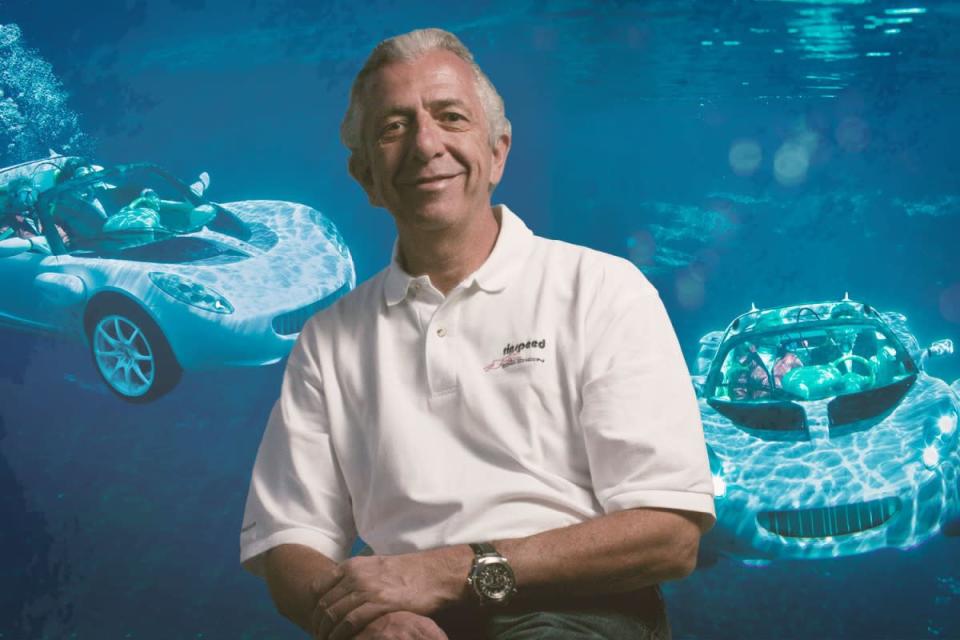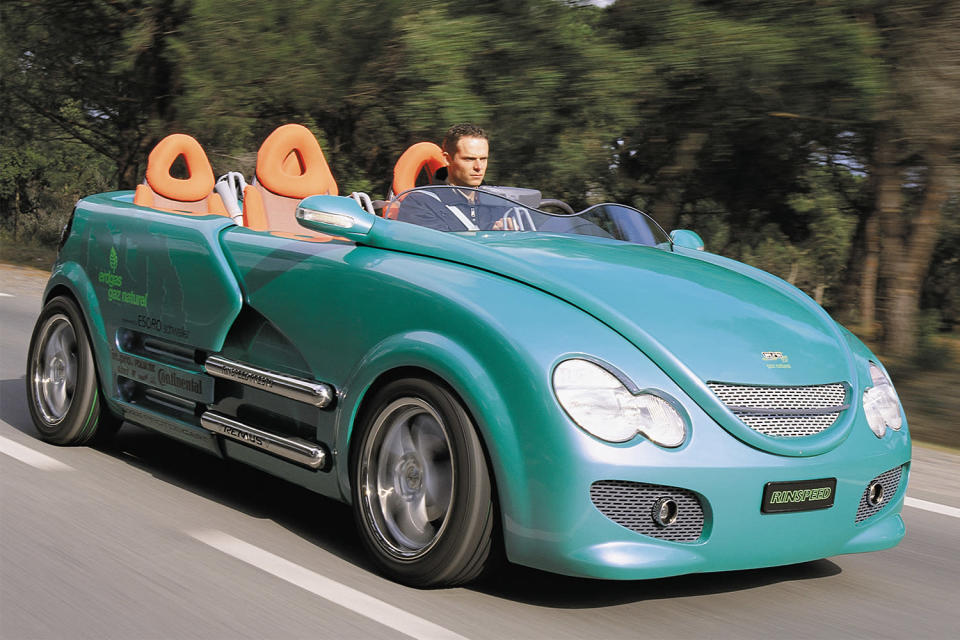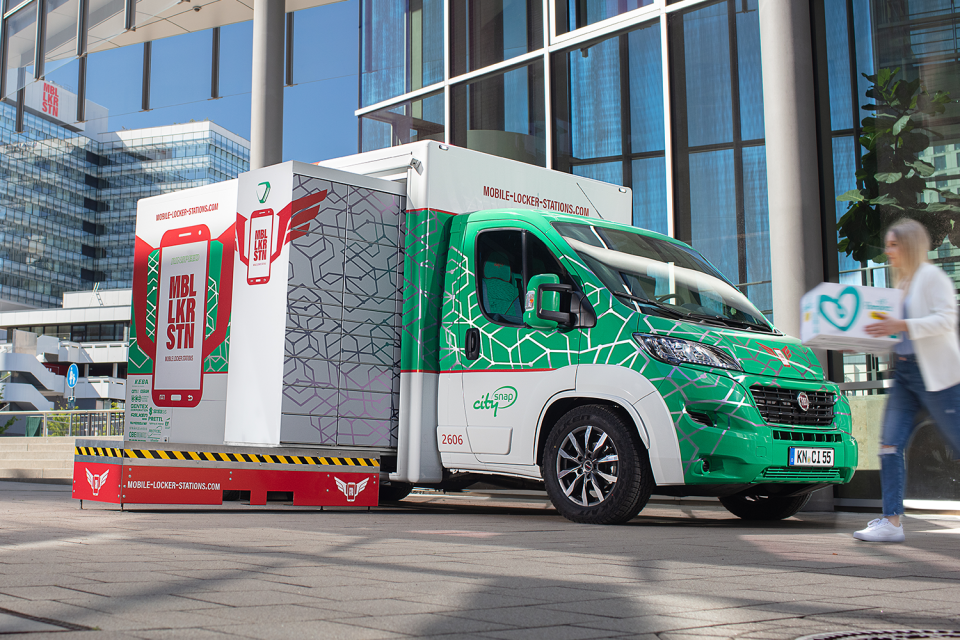
Frank Rinderknecht isn’t certain about currently being named a automobile designer.
“We’re more of a imagine tank for mobility challenges,” he tells InsideHook. “We just try out to force new thoughts, but it is essential for me to make them definitely come about, and not just exist in PowerPoint. You have to be in a position to contact the item. You can not radiate a new plan from a piece of paper.”
That’s why the Switzerland-primarily based Rinderknecht — who started out out importing these strange new matters identified as sunroofs back in the 1970s, before launching Rinspeed, which commenced as a massively prosperous Porsche tuning organization — has poured a good deal of the cash he’s designed into producing dozens of idea cars. And which is large thought. Over the past 30 years he has built, engineered and crafted vehicles like the Presto, a motor vehicle that extends and contracts on desire, and the UC, an extremely-compact electric two-seater with generate-by-wire joystick manage.
A great deal of his suggestions predate societal shifts in our transportation requirements. His Bedouin was the 1st pure-fuel-driven automobile, his Advantige Rone the initial supercar run by kitchen waste biofuel. But Rinderknecht’s track record for creating the insane into someting real at times gets in the way of his genuine contribution to reported mobility difficulties. Possibly his most effective-acknowledged notion vehicle is the “sQuba.” It’s a entirely submersible car or truck, offering occupants are donning scuba gear.
It is correct that even the most committed of vehicle nuts may well not have read of Rinderknecht, but a lot of his suggestions have been borrowed by the broader auto industry. Matte paint and nanotech coatings, scratch-evidence polycarbonate windshields, biometric driver monitoring, in-vehicle connectivity, mounting controls on the steering wheel — Rinderknecht did them initially. The latter plan would have produced Rinderknecht a fortune if worldwide patenting legislation had been considerably less circumventable.
“Our method at Rinspeed is not about creating things a minor little bit superior right here or there,” Rinderknecht describes. “We consider to believe in terms of revolution, not evolution, and for that you will need a unfastened head and, yes, a minor shot of craziness — although a ton of blood, sweat and tears goes into earning these thoughts serious. Of system occasionally persons even now shake their heads and say, ‘What the hell is he undertaking now?’ And still the CEO of every massive motor vehicle organization will come to our booth at the auto exhibits.”

The Presto, which can extend on command.
Rinspeed
Without a doubt, Rinspeed’s cars tend to be unveiled extra at client electronics shows than motor vehicle displays these days. Which is in trying to keep with what Rinderknecht feels to be the previous industry’s progressive check out-something frame of mind, and because his notion automobiles, and the new suggestions they embody, have a tendency to appear out of partnerships with the likes of reducing-edge developers in, say, resources science, that traditionally have experienced no connections with the vehicle environment but want to showcase their solutions.
This helps hold charges down, but it is also indicative, he reckons, of how we’re very likely to think of autos in the long run: extra as tools or devices. Some of the big car or truck organizations are, as he places it, by now seeing that the winds of change will shift absent from sheet steel and much more to knowledge administration, but they’re a lengthy way behind the likes of Google.
“Compare the progressiveness of the consumer electronics environment to that of, say, German carmakers, which are typically continue to engineering-driven, focused on giving motorists a seat with 85 positions when no one wants them,” chuckles Rinderknecht. “Too several of these large vehicle providers have a mentality that’s frightened of transform. That’s why the handful of lesser companies entering the marketplace, like Tesla, seem to be so disruptive, simply because they’re nevertheless in a position to act on intestine. Which is crucial for the reason that the speed of improve in the mobility sector is only likely to get a lot quicker.”
Much more Like This
Smaller speculate then that eyes are inclined to be on what Frank does next, and that is not just his turning his ideas into NFTs. His future mobility project is termed CitySnap, which is exploring the notion of modular, click on-with each other vehicles. His thought is for a system — or “skateboard,” complete with the powertrain, batteries, electronics and so on — on to which is mounted an interchangeable overall body, be that of a car or truck or a truck, delivering the variety of versatility that drivers ever more demand from customers of their autos in the 21st century (consequently the inexorable increase of the SUV).

The fourth generation of Rinspeed’s CitySnap modular auto.
Rinspeed
A pilot generation application will launch afterwards this year — the first Rinspeed notion to go into creation — and the thought is previously remaining pondered by internal-metropolis logistics corporations, for which, Rinderknecht argues, all kinds of efficiencies are attainable, particularly offered the pandemic boom in obtaining things shipped. But this sort of design also tends to make feeling, he argues, simply because cars and trucks are so packed with electronics these days, the pace of alter staying this sort of that they are out of date just before they’ve still left the large amount, and certainly extensive just before the bodywork of a auto requires replacing.
“Just how very long is a driver eager to put up with old software program? Perhaps 5 a long time? And he simply cannot even update it since the electronics are so pervasive throughout any new motor vehicle now,” he argues. “One of the most important issues dealing with the sector is the lifespan of its products. You used to be able to get 20 years and 250,000 miles out of a automobile. Now the smarter they get, the shorter their lifespan, until we make modifications. The reality is that we have to consider in different ways about mobility. No person is aware what our mobility needs will be in many years to come, thanks to alterations in culture, technological know-how, the ecosystem. Of program, when we to start with started off conversing about a process that allowed big sections of a car to be swapped, which is an notion borrowed from aviation, plenty of individuals said, ‘Here we go all over again, it’s Nuts Frank.’”
Extra Like This
“But it is clear that we simply cannot go on as we are. It will make no feeling to have personal automobiles which for 70% of their lifespans are just sat on the road unused and obtaining previous, or when 80% of car or truck journeys are significantly less than 40 miles. Which is poison to the economics of mobility,” he provides. “And we have to remember that attitudes to vehicles are modifying quickly as well. It would be intriguing to see, say in 30 several years time, how we search back on cars — as these evil, polluting objects, or as a cultural good. My appreciation for vehicles will make me element of a dying breed. Check with younger urban people like my daughter now and most do not very own a motor vehicle and most really do not want to. They are just a lot more rational about autos. To them they are a signifies of transport. ”

The legendary sQuba, possibly the vehicle Rinderknecht is best known for.
Rinspeed
It is due to the fact of that shift — and the introduction of autonomous cars and trucks, whilst he reckons it will be a long time of incremental advances just before this sort of an “ultra-advanced, ultra-high priced, extremely-demanding idea” goes mainstream — that Rinderknecht is persuaded cars as we’ve recognized and beloved them are on their way out. That, and due to the fact autonomous autos will be so high-priced, possessing one won’t make any perception for most people. As he factors out, you might set off upgrading a car or truck if you are even now powering the steering wheel, but if you’re trusting your daily life and that of your relatives to the machine you are all sitting down in, you’re heading to want that machine to be up to day all the time.
And which is a car that operates on a intent-created floor, stable on 4 wheels. Picture the calls for that would be necessary of a motor vehicle that flew. That’s specifically why, and he’s asked normally enough, Rinspeed has nevertheless to make a car with wings — if you really don’t count the Splash, which experienced hydrofoils.
“I just really don’t believe that a flying automobile is sensible, and the kinds that are coming by now are not genuinely autos as I think of them. They are odd issues that have to serve two masters and really do not pull it off, so you finish up with anything that flies but which is way too fragile to be effectively made use of as a motor vehicle,” claims Rinderknecht. “It’s excellent how playful these strategies are, but they are not realistic. Certain, I appreciate a notion. But there’s always a credibility and a seriousness to what we do.”
Additional Like This
This short article was featured in the InsideHook e-newsletter. Sign up now.
The write-up A Renowned Idea Car Designer Weighs in on Our Automotive Long term appeared 1st on InsideHook.
The write-up A Renowned Idea Car Designer Weighs in on Our Automotive Future by Josh Sims was originally released on InsideHook.
